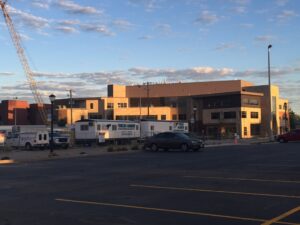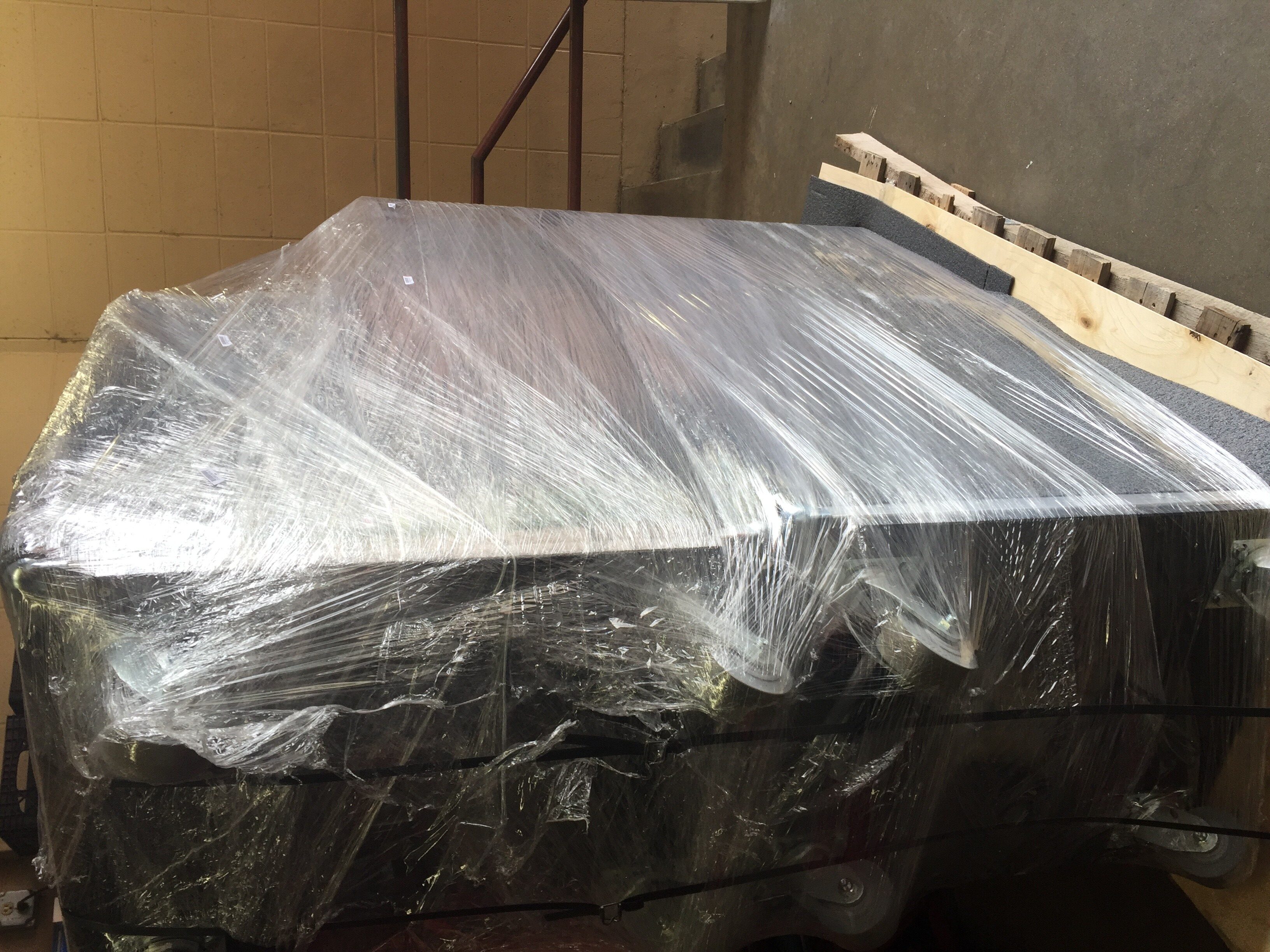Being a part of a new building process is quite an adventure. The building will open to the general public in 100 days. It has been approximately 200 days since my last blog about it- check out my first blog on the building process here.
 100 days until the building opens to the public, students wandering through taking a look, dining employees getting to know their new kitchens, and of course, brand new technology running our meeting rooms.
100 days until the building opens to the public, students wandering through taking a look, dining employees getting to know their new kitchens, and of course, brand new technology running our meeting rooms.
It’s a bit daunting to think about how much is left to be done and how little time is left.
As the project has moved forward, I have continued to learn more and more about how all the pieces of a new building come together. Four years ago I was reading drafts and plans of how things would look and be wired. On the latest walkthrough, it is all starting to come together. Equipment is installed, wired, and starting to work. It’s astounding how long it has taken and yet how quickly all the pieces are coming together.
It is has been eye-opening that even though hundreds of people have read the project books, details are still missed. Budgets get adjusted, and sometimes pieces just don’t come together in time. Many words from my last building update remain valid. In particular, the importance of setting a timeline and sticking with it as well as setting the budget and maintaining it.
The timeline is still as vital today as it was 200 days ago. Just as it is important to schedule start and ends time to an install it is also important to schedule progress checks and walk-throughs frequently; although there is a balance to checking on the work and micro-managing. For instance, in this project’s case, there are so many people and layers that changes need to go through before they can happen sometimes it takes too long to get a change order in and approved before it can no longer be modified. Once the ball is rolling it’s almost impossible to stop without an increased expense.
Checking early and often can combat this, but you also don’t want to get in the way and slow down the timeline. Each step affects the next, so if something needs to be changed get the process started early, so it doesn’t have significant ramifications on the building schedule. There are a few items in this building that if caught earlier could be changed, however, that didn’t occur and for now, it’s too late.
The budget is just as important from start to finish as I wrote the last time around, but as we go, I’m learning just how valuable it is to truly get the budget set for all the needs right away. It’s not worth the stress or the headache of wondering if there will be enough money left afterward to add this or that. Establish the budget from the start to include everything deemed a priority, and then leave room for the price of those items to change. Having the funds set aside from the beginning will help with getting everything done on time and right the first time.
Finally, last time I wrote about balancing persistence and patience, and it remains even truer today. I would also add acceptance and creative problem-solving. Accept the things that cannot be changed, lower your expectations for perfection. The building and technology will not be perfect, recognizing that early on can help you not to get stuck on the small things. Decisions have to be made fast, pick your priorities and stick with them. Focus on significant issues; the little ones won’t matter in the long run.
Get creative. Find different sources to purchase equipment if you can; it might be cheaper or even free. Currently, I am applying for a grant to add the lighting equipment my staff wants and loves. Buy ahead, I am an organized person, so I like to have the right cases and storage capabilities. However, these items could be considered extra when it comes to a budget that is running low. So I purchased ahead and bought cases that are general enough they will be easy to integrate into whatever we end up within the building. Be creative in your problem-solving, look at every possibility, and be prepared to make changes.
Last but not least, don’t forget about your current facility or shows. You may still need to invest in what you have to keep your current shows running. If something is already 15 years old and the project completion is five years away, it’s likely going to fail or have trouble before you are finished with it. If your budget allows, do not plan to move your 15-year-old equipment into the new facilities. You do not want every room and rack to look like the highlight of the daily AV nightmare posts floating around the internet.
